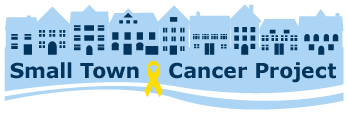Generous Help: 2009-2022
Community Members and Experts
I sought and received guidance from several experts through phone discussions, email conversations, and in-person meetings. My most substantial help, in terms of time spent and knowledge shared, came from these sources, in chronological order of their generous assistance:
- Polly Schlaff, Jane Hanna, Judy O’Brien, Sue Breniser, Joann Hulce, Laura Townsend, Margaret Higgens, and Terry Wildfong: volunteers who recruited participants, conducted the survey, and helped to organize the data during the survey period.
- Tanya Cabala, environmental leader and coordinator of the White Lake Public Advisory Council: provided encouragement and information throughout this project.
- Vicki Webster, Environmental Specialist, and Jill Montgomery Keast, both of Public Health – Muskegon County: opened up their files for my research into the polluting industries, and helped me learn how to set up a spreadsheet for organizing data.
- Dr. Jean Chang, epidemiologist, Public Health – Muskegon County: showed compassion and provided encouragement for beginning our list, helped with developing survey questions, and helped us understand local cancer incidence rates.
- Nancy Waters, Muskegon County Clerk; Susan Degen, Deputy Muskegon County Clerk; and other clerks: helped with researching death records for information about cancers of White Lake area citizens.
- The Local History & Genealogy Department at the Hackley Public Library: provided access to obituaries to help with locating next of kin, newspaper archives for information about the industries, and old phone books and directories for information about previous addresses of participants.
- Jack Lipka, curator of the Montague Museum: provided information about White Lake area workplaces of the 20th century, which helped me to group them into appropriate categories for reporting on our participants’ workplaces.
- Joshua Tootoo and Ellis Valentiner of the Children’s Environmental Health Initiative, then housed at the University of Michigan: provided Geographic Information Systems training including how to use ArcGIS software, encouraged organizing cancer types into fewer groups, and introduced the use of the North American Industry Classification System (NAICS) to organize workplaces.
- Barb Reese: accompanied me to the University of Michigan in Ann Arbor and later to Orlando, California, to support me in meeting with experts who could educate me on the use of Geographic Information Systems in trying to understand environmental links to cancer.
- Jamie Way and other Muskegon County Geographic Information Systems specialists: provided guidance and help with GIS coding and mapping.
- Geoffrey Jacquez and BioMedware Geospatial Research and Software: conducted prolific research on the topic of residential mobility and cancer that affirmed our focus on the importance of previous residential addresses in studying environmental health. He provided access to SpaceStat “time-space” software, guidance for using the software and for setting up a protocol for analysis, and ongoing assistance and encouragement that although our small town had “the problem of small numbers” our concerns were worth exploring.
- Jeff Auch, Manager, City of Montague: helped with access to Hooker Chemical archives, and Jim Q. Rose, Chemist: answered my questions related to information found in the archives.
- Rick Sadler, PhD, Associate Professor, Division of Public Health, Michigan State University: provided help and encouragement while I struggled to decide what maps would be helpful to illustrate points I wanted to make, and then made beautiful maps for this report. He joined me in meeting with our state statistician and epidemiologists when I had questions about ZIP codes versus census tracts for reporting on cancer incidence.
- Georgia Spivak, Michigan Department of Health and Human Services (MDHHS) Cancer Statistician and her associates: kindly listened to our concerns and provided tables in 2010 showing White Lake area cancer rates by ZIP code, and later by census tract upon our request in 2021.
- Susan Derby, Language Arts and Math Professional: patiently and expertly edited this report.
- Ron Derby, Derby Design, LLC., professional graphic designer and website developer: helped me present this report in a format that would allow readers to seek out the portions of interest to them.

